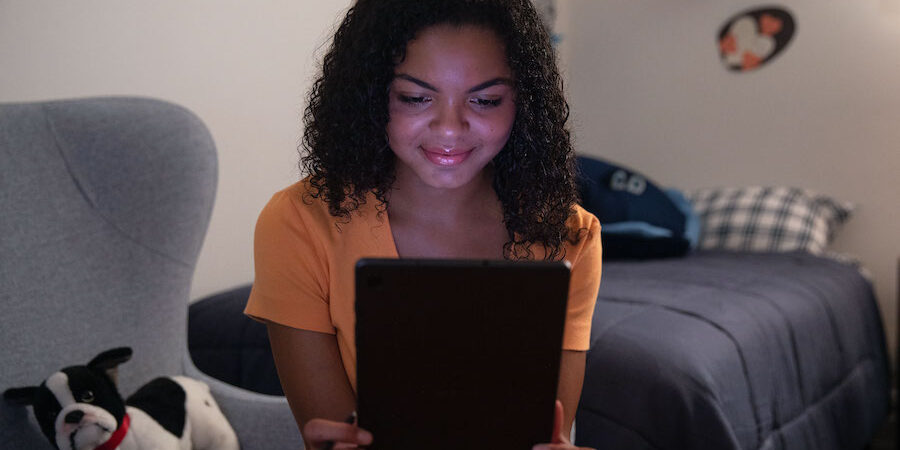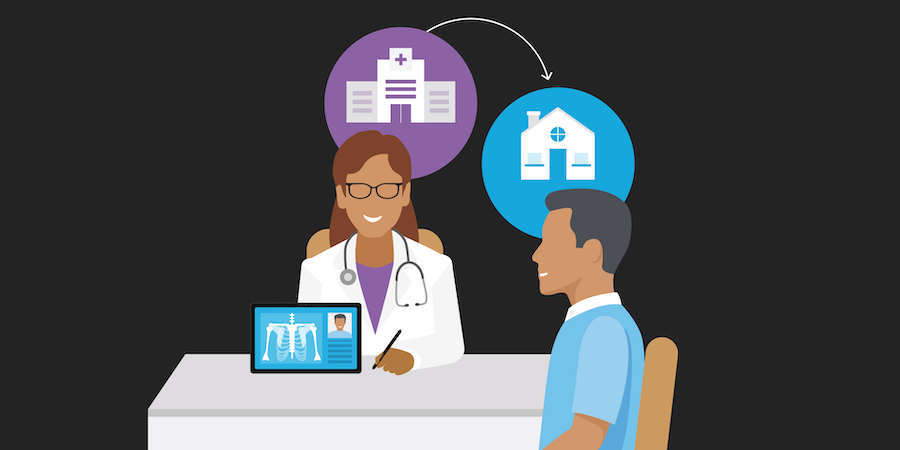Remote patient monitoring (RPM) and virtual visits were poised for steady growth before COVID-19, but the pandemic made these telehealth tools an immediate clinical necessity. Hospitals and health systems cobbled together hardware and apps practically overnight to keep care providers connected with patients during lockdown. But many patients didn’t have the devices or broadband they needed to receive care at home.
Mount Sinai Kravis Children’s Hospital, based in New York City, addressed this challenge by providing patients with highly customized tablets that let them connect with their care providers for personalized virtual care.
‘Digital divide’ challenges within telehealth
As telehealth usage skyrocketed during the pandemic, the trend shed light on a major barrier to remote care: Up to 42 million Americans don’t have high-speed internet access at home.
Many live in remote and rural areas where broadband isn’t available. But even in major cities like New York, telehealth access can be a problem for lower-income families. Among adults with household incomes of less than $30,000 a year, 43 percent don’t have home broadband services, 41 percent don’t have a computer, and 24 percent don’t even have a smartphone, according to Pew Research.
Without these tools, some of Mount Sinai’s most vulnerable patients couldn’t access virtual care during the pandemic, says Eyal Shemesh, M.D., Professor of Pediatrics and Psychiatry at the Icahn School of Medicine at Mount Sinai, and chief of the Division of Developmental and Behavioral Pediatrics. “Patients were afraid to go to hospitals, and hospitals were inundated with coronavirus cases, which made clinics less available. On my own team, two doctors were redeployed to support coronavirus-related medical tasks.”
Presented with these new patient engagement challenges, care providers needed new ways to keep in contact with their most vulnerable patients. And Dr. Shemesh, who had been conducting research on remote interventions for years, knew it was important to ensure that low-income families would have easy access to the hospital’s telehealth offerings.
New funding, old partners
Dr. Shemesh helped the hospital secure an $860,000 award from the Federal Communications Commission (FCC). Funded by the Coronavirus Aid, Relief, and Economic Security (CARES) Act that Congress passed in 2020, the grant was meant to support healthcare providers using telehealth during the pandemic. Dr. Shemesh and his team used the FCC support to create a program that provided hundreds of tablet devices to patients and families who needed to keep in close contact with their medical teams at Mount Sinai.
To set up the tablets, Mount Sinai partnered with Equiva, which previously helped the health system launch a bedside tablet program for inpatient hospital rooms. With Samsung Knox configuration and management technology, Equiva secured the new devices and loaded them with its robust, easy-to-use health relationship management (HRM) platform. When patients turn on the tablet, instead of seeing the typical Android home screen and apps, they see Equiva’s HRM start menu, which consists of three circular buttons.
“You click on one circle to access telemedicine visits, one button to access educational materials and another button to take surveys,” says Nir Altman, CEO of Equiva. “Then you can delve deeper into each category for other options. It’s easy for patients to navigate, and very flexible for the organization to add and remove content, functionality and applications.”
That ease of use and flexibility makes the solution ideal for telehealth, says Dr. Shemesh: “Because we were going to be sending these devices to patients’ homes, we really needed them to work right out of the box. Mount Sinai’s teams treat an incredibly diverse patient population — racially, ethnically and economically — and our care providers are well aware of the digital divide among some patients who don’t have Wi-Fi, don’t have tablets and may not have digital literacy. We simply had to make it work for all of our patients, especially those who are disadvantaged.”
Despite the simplicity of the solution, Mount Sinai expected some patients to have tech support questions, so Equiva set up a helpline. “A year and a half later,” Dr. Shemesh reports, “after thousands of patient interactions on the devices, we’ve had only six calls. It’s astounding.”
Different use cases, different user experience
Mount Sinai originally launched the new tablet program for pediatric patients — including the Child Life group, which supports children with chronic illnesses, and the Visiting Doctors program, which sends doctors to the homes of particularly vulnerable patients. When other departments began requesting the technology, the project team worked with Equiva to make it available. One use case is organ transplant patients, as these patients need ongoing monitoring of immunosuppressant levels and are especially vulnerable to infections.
Each patient population had different needs and goals for the tablet solution, so Equiva worked closely with clinical leaders from different departments to determine exactly what communication features and educational content they wanted their patients to have.
The Child Life group, for example, is responsible for supporting the quality of life and wellness of children being treated in various departments. As such, they wanted to provide general education materials about what it means to be sick and how to stay healthy. Meanwhile, transplant recipients needed very specific information about living with donated organs. The Visiting Doc group was more focused on connectivity, because their very sick pediatric patients need to be contacted almost every day.
Improve the patient experience with mobile
From check-in to remote monitoring, get your free guide to elevating care with mobile technology. Download Now
Equiva met with clinical leaders from each speciality to understand their objectives for that patient population group and identify the resources needed to achieve those objectives, says Altman. “We configure the user experience for each patient population in collaboration with the clinical care team. Through our powerful analytics software, we are then able to measure the extent to which clinical objectives are met and make adjustments to optimize, creating a feedback loop that enables us to continually innovate and improve the resources, and thus the patient care objectives engagement.”
Equiva can remotely optimize the user experience, including a range of care tools available to patients. “Our ability to fully configure these devices, and then update any device anywhere is a part of the seamless solution that Samsung and Equiva have developed to optimize clinical care objectives. It looks very simple, and that’s the point, but behind it is a very powerful and flexible backend that gives clinicians the ability to deliver the right content and services to the right patient at the right time in the right place via the right device.”
The future of telehealth
Although the FCC-funded project is specific to the coronavirus pandemic, Dr. Shemesh says, “We will be doing this beyond COVID-19, no question. The pandemic made it more obvious that telehealth is valuable, even essential, and remote care is here to stay.”
Altman agrees that virtual care models and solutions will continue to grow and evolve. “Mount Sinai, Equiva and Samsung are already at the forefront of this innovation, working on use cases that are completely new. We’re not taking something that people have been doing for 20 years and making it slightly more efficient; we’re jointly developing new standards for the delivery of healthcare in a distributed way. And that’s very exciting.”
Samsung offers an array of digital health technology to help patients — and their care teams — reduce stress, be informed and stay engaged. Mobile devices can also streamline clinical communications. Learn more in this free, comprehensive guide.









